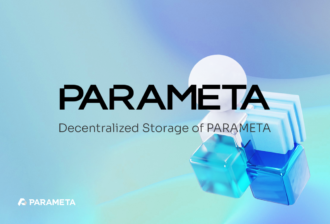BLOG
PARAMETA’s Interchain Technology, BTP (Blockchain Transmission Protocol)
2023.04.19
Greetings from the PARAMETA Team,
While there are numerous blockchain projects underway around the world, and many dApps are independently serviced on different platforms with different technical characteristics, we cannot help but think about the issue of integration. If a dApp can only be used on the platform on which it is based, its convenience and universality will inevitably decrease in the long run.
Therefore, since its inception, PARAMETA has been developing various core and application technologies with the ultimate goal of building an interchain environment that enables communication and interaction between blockchains. We envision a time when interchain will be realized and services will be popularized through connections between different blockchains, allowing users to utilize the features of both public and private blockchains.
Let’s take a look at BTP, an interchain technology developed by PARAMETA.
The Blockchain Transmission Protocol (BTP) is a chain-agnostic, scalable, cross-chain interoperability solution. BTP is a universal interoperability solution and is also available as a standard protocol for the global interchain project ‘ICON’, built on PARAMETA’s own blockchain core engine ‘loopchain’.
* Source: Vitalik Buterin, ‘Chain Interoperability’, Sep 9, 2016
BTP allows any blockchain that supports smart contracts to be interconnected and integrated, and allows users to easily transfer information such as tokens, NFTs, and messages between connected blockchains. Furthermore, unlike traditional Bridging Solutions that rely on curated Validators to deliver messages and Custody Funds between blockchains, BTP is a more secure model with fully decentralized incentivized relayers (nodes) and on-blockchain (on-chain) validation of messages.
BTP can be thought of as a standard for making heterogeneous blockchains interoperable, including blockchains based on completely different consensus models and algorithms. Interoperability in general industry means that you can replace System A with System B without any constraints or issues, but in blockchain, it’s defined as the ability to facilitate value transfer, service calls, and data exchange.
This is how most blockchains have evolved from operating in typical silos, meaning data and asset stores that are only available to one group of users, to a trustless settlement layer that enables secure transactions through universal standards.
From an application level perspective, the transfer of tokens between disparate blockchains is probably the best example. At the protocol level, BTP facilitates the direct transfer of tokens from one blockchain to another via smart contracts without using a centralized trading platform.
Another example of cross-chain communication enabled by BTP is PARAMETA’s DID-based identity authentication platform, MyID, where the Decentralized Identifier (DID) data of individuals registered on the MyID platform can be authenticated on the ICON public network, allowing owners to exchange messages on interconnected public or private networks via BTP without having to resubmit DID documents or public keys to each blockchain.
So what are the key components that make up a BTP?
BMR (BTP Message Relay): Relay
BMC (BTP Message Center): Message Center Contract
BMV (BTP Message Verifier): Verifier Contract
BSH (BTP Service Handler): Service Contract
In order to fully enable BTP to reliably transfer data and maintain its integrity and validity, blockchains need to implement the following components through smart contracts.
First of all, the BTP Message Relay (BMR) is responsible for forwarding messages between message centers. The role of the Relay is to monitor the BTP Message Center (BMC) and forward the cross-chain transactions (transactions) generated by the BMC to the destination blockchain, along with the verification information that allows the destination blockchain to verify this cross-chain transaction. The relay cannot distort the cross-chain transaction and verification information, and if it does, it can be directly verified by the destination blockchain, so there is no need to trust the relay. This is what makes BTP a secure and reliable technology.
The BTP Message Center (BMC) aggregates all BTP messages on a given network, including creating BTP messages and forwarding them to relays. The BTP Message Verifier (BMV) verifies and decodes messages received as BTP messages from relays. This is the mechanism that allows cross-chain transactions to be verified using smart contract technology rather than through a trusted validator, and is arguably the most innovative part of the BTP technology. The BTP Service Handler (BSH) is responsible for holding application-specific logic and forwarding BTP messages to service smart contracts (e.g., cross-network token transfers vs. cross-network NFT transfers).
Now let’s look at some typical use cases for BTP.
Cross-Chain ‘Token Transfers’
The most common interoperability use case is to transfer tokens from one blockchain to another. While cross-chain bridge contracts typically work by burning tokens on the source chain and minting an equivalent amount of tokens on the destination chain, BTP allows users to transfer tokens across connected chains without the need for bridges on each chain.
Cross-Chain ‘Arbitrage’
Unlike most existing bridging solutions that only support cross-chain token swaps, BTP will also support more general messaging capabilities such as calling cross-chain smart contracts in the future. In simple terms, this means that smart contracts running on ICON will be able to interact with smart contracts running on other blockchains such as Binance Smart Chain and Moonbeam. This makes BTP an essential solution for building decentralized cross-chain arbitrage platforms.
Cross-Chain ‘NFT-as-Identity’
The metaverse is the next big thing in the crypto industry, and ‘NFT-as-identity’ is expected to play a pivotal role in the metaverse space in the coming years. Take a popular NFT project like Bored Ape Yacht Club (BAYC) for example. Bored Ape NFTs are more than just collectible pieces of art, they are also being used as membership cards that grant access to members-only benefits in the real world. It’s a prime example of how on-chain NFTs can be used as a tool for identity proofing.
So far, we have covered BTP’s components, how it works, and typical use cases, but what are its unique strengths compared to other interchain technologies and interoperability solutions currently in the market?
At this stage, the forms of interoperability offered by solutions other than BTP are often limited to within their own ecosystems. BTP, on the other hand, is more focused on connecting different ecosystems that have their own unique architectures. As mentioned earlier, BTP is chain-agnostic and can interconnect any blockchain that supports smart contracts. Unlike other solutions, BTP can also be described as more of a product: an “out-of-the-box” solution that can be implemented relatively easily on existing blockchains. Being chain-agnostic means that there are no strict requirements that each blockchain must meet in order to implement BTP, you simply need to build the three smart contracts (message center/validator/service contract) described above on a given chain and then add support for that chain to your existing relay network. In other words, it’s an inherently easy-to-use solution.
The recent spate of hacks in the blockchain industry, including P2E games, NFT projects, and DeFi services, has raised calls for increased security, and in the case of a vulnerability in a cross-chain bridge connecting multiple blockchains, insufficient decentralization has been cited as a major cause of the incident. Unlike large blockchain networks that are managed by thousands of nodes and are nearly impossible to hack, networks that rely on a small number of validating nodes for cross-chain bridges are less secure and can be compromised at will. Ethereum co-founder Vitalik Buterin has said that there are fundamental limitations to the security of bridges that span multiple ‘sovereign zones (blockchain networks)’.
Unlike traditional cross-chain bridging solutions that rely on a small, curated set of validating nodes, BTP provides strong safety through on-chain validation of nodes and messages in a completely decentralized manner.
In addition to continuing BTP development and research, PARAMETA is also supporting the ICON project’s blockchain platform and blockchain technology in general. Blockchains that will be connected to ICON via BTP include Binance Smart Chain (BSC), Polkadot, NEAR Protocol, and Harmony, while major DeFi projects include Balanced DAO, Omm Finance, Optimus Protocol, and Equality Exchange.
Until the day we connect the world’s blockchains with interchain, PARAMETA will continue to do our best in technology development and research.



